Let’s talk about Mechanical Keyboards
Since you’ve made your way to this page, you probably have heard about mechanical keyboards. You can buy basic ones in almost any store, but to achieve the ultimate typing experience, you need to understand everything that contributes to a perfect “clack” also known as “endgame”.
What
Mechanical keyboards differ from other keyboards by having a mechanical switch under each key, having most often springs for resistance. More traditional keyboards use a rubber-mat with traces which is cheaper to manufacture but lacks the feeling of a mechanical switch.
I will cover all the necessary parts, but if you want to watch a video instead of reading, Taeha Types has a really good video of the anatomy of a custom mechanical keyboard.
Why
Mechanical Keyboards do have a slight edge over rubber dome-keyboards in responsiveness and N-Key Rollover but this is minimal. A Mechanical keyboard doesn’t necessarily type better than a rubber dome, it all depends on your own preference.
With a mechanical keyboard, you can often choose if you want a tactile bump, smooth linear or clicky feeling/sound. Many users also prefer the mechanical switch over a rubber dome for the feel, and since there are a lot of options for different switches, you can more likely find something that suits you best in a mechanical keyboard.

Custom Mechanical Keyboards
Now we’re in business!
Custom keyboards are tailored keyboards to your preference, which you can build yourself. Custom keyboards consist most often from 6 different parts:
PCB, Switches, Keycaps, Plate, Stabilizers and Case.
By building a keyboard that has the layout you like with the switches you prefer, you can improve your typing experience and hence make it more enjoyable to use your computer. As a Developer, I have most of the day my keyboard in front of me, I value highly that it feels and sounds great, and many don’t even consider this.
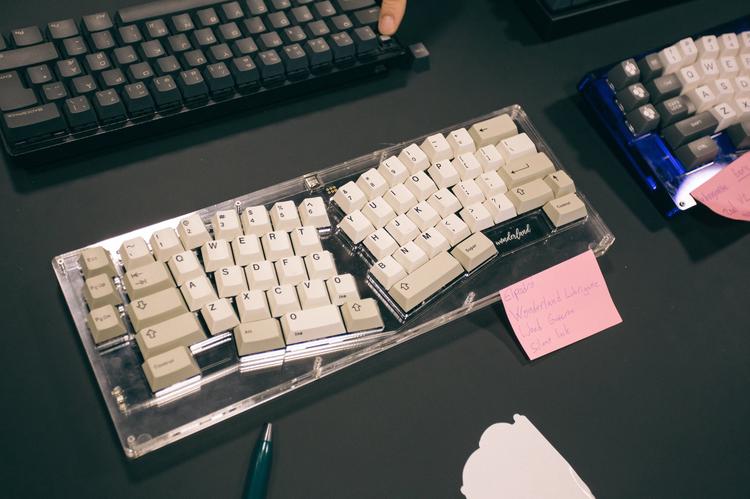
PCB
This is the brains of your keyboard and handles all the logic. They come in different sizes and layouts, most often spanning between 60%, TKL and FullSize, but there are tons of variations, also split PCBs. The PCB defines the key-layout and hence the size of the keyboard. When looking to build a custom keyboard, this is the part you start to build everything around.
Note: You CAN build a keyboard without a PCB, but then I’d call you a madman.
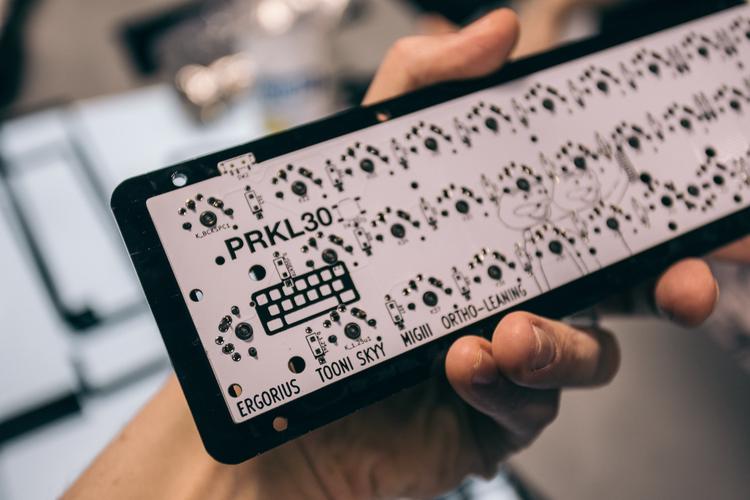
Switches
This is the mechanical part of your keyboard, it has the biggest impact on how your keyboard feels and sound to type on. Switches are categorized in 3 main categories: Tactile, Linear and Clicky.
Every manufacturer creates slightly different switches. Some are smoother than others, some have a tactile bump earlier than it’s fellow, they vary in force needed for a keypress and of course visual differences with colours and/or translucent parts. Switches are most commonly soldered onto the PCB but there are also some hot-swap solutions.
My own favourite switches at the time of writing are Durock T1 and JWK Kiwi. These are tactile and have a much more pronounced bump than your classic Cherry MX Brown.
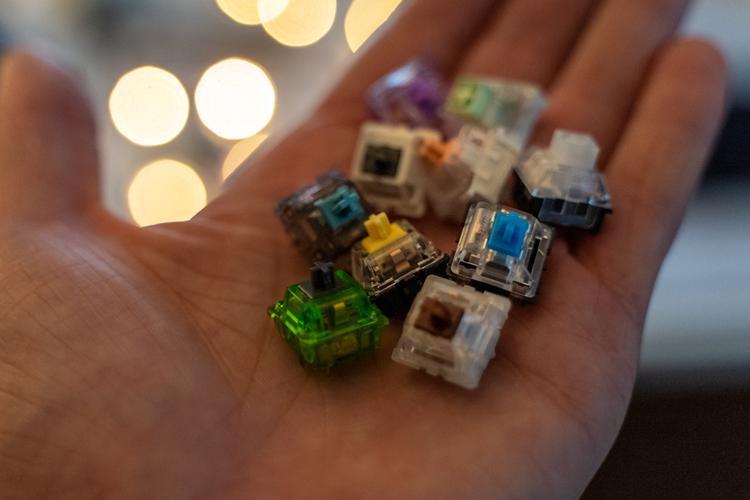
Keycaps
Keycaps are what often catches your attention at first when you see a keyboard. They can vary in profile, layout, thickness, the plastic used and of course visually with various colours and/or legends. Cheap keysets range around 20-40€ per set (These are in almost all market keyboards) but can range up to even 300€ for a single set. I’d suggest that you invest in thicker keycaps in the profile you like, thicker ones often feeling better when typing.
A good middle-ground is EnjoyPBT keycaps, they range often between 80-120€ and good quality & feel for the price.
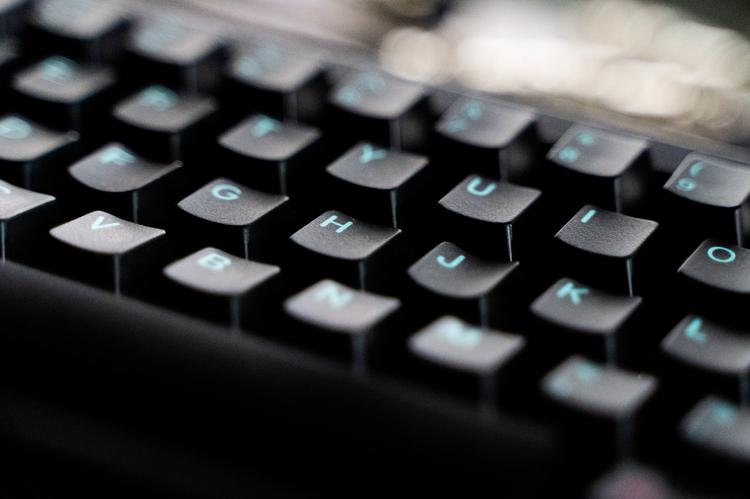
Plate
In tray-mount cases, you don’t have to use a plate, but using a plate is highly recommended as it stabilizes your mechanical switches and removes wobble. Plates come in several different materials, most popular ones being aluminium and premium ones again brass.
There is often a plate made for a specific case/PCB. If your PCB supports both ANSI and ISO layouts, make sure that your plate supports the layout that you want to use. If unsure, you can always ask me for help!

Stabilizers
Longer keys need a stabilizer to make them stable, duh. These are used under keys like spacebar, enter and backspace. There are some differences between stabilizers and their manufacturers, most people preferring nowadays Durock Stabilizers over classic cherry ones. The difference can be felt in smoothness as well in a more “thock” sound. Lubing your stabilizers will significantly remove any excess sound that it makes, like rattling or bottoming out.
Stabilizers are most often mounted to the PCB, but in some cases, you may have to use plate-mounted stabilizers.
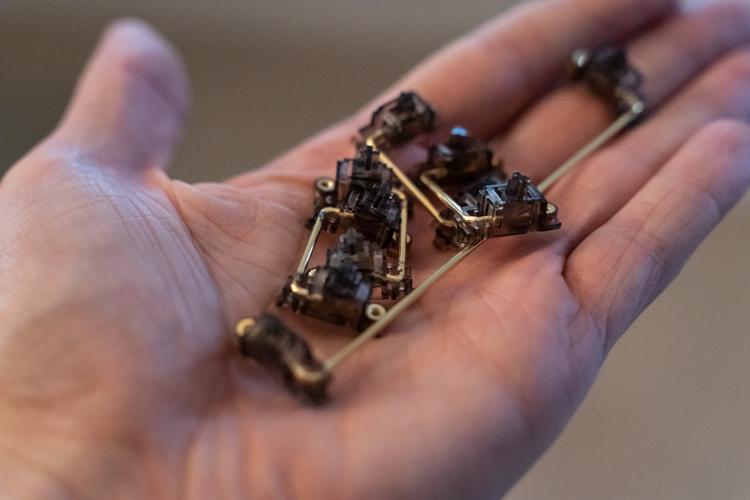
Case
When you can everything else set-up, the only thing missing is a case. Cases house your keyboard and also affects how your keyboard sounds like. Cases come in all shapes and sizes, look at the alternatives that are made for your PCB, or see if you could perhaps create your own case from wood or acrylic using a laser-cutter.
I personally like that my cases have some mass so that they stay sturdy on the table. I also like to use foam-mat between the case and keyboard to absorb any unnecessary sound vibrations from hitting the keys.
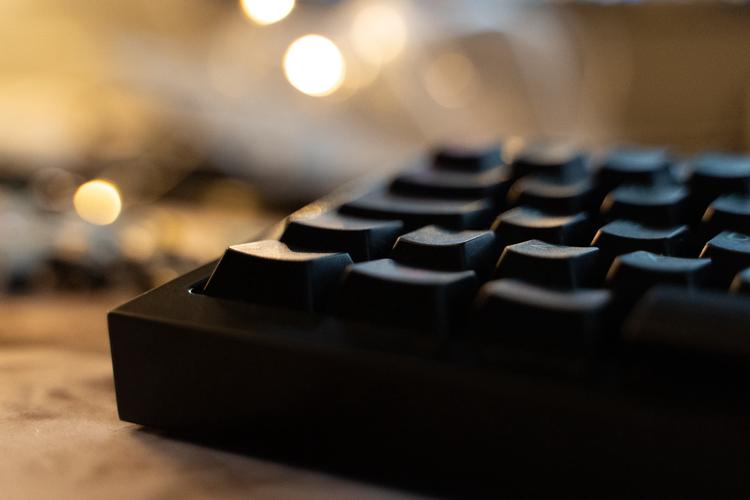
What kind of keyboard do you want?
I can help you with the whole process from selecting the right keyboard parts to soldering together the final product. Hit me a message and let’s create something that brings value to you!
See my keyboard-related posts
Neito Rev. 2 Collaboration Opportunity
I'ts been too long since Rev. 1, but sometimes life happens and things take longer than anticipated. Now, however, progression has happened!
Vortex Model M SSK kit review (Sponsored)
Review of the new Vortex Model M SSK keyboard Kit. Despite this being a sponsored review I'm allowed to give my honest opinion on the keyboard.
Vortex x MiTo Hellcat keyboard kit review (Sponsored)
Review of the new Vortex & MiTo Hellcat keyboard kit. Despite this being a sponsored review I'm allowed to give my honest opinion on the keyboard.